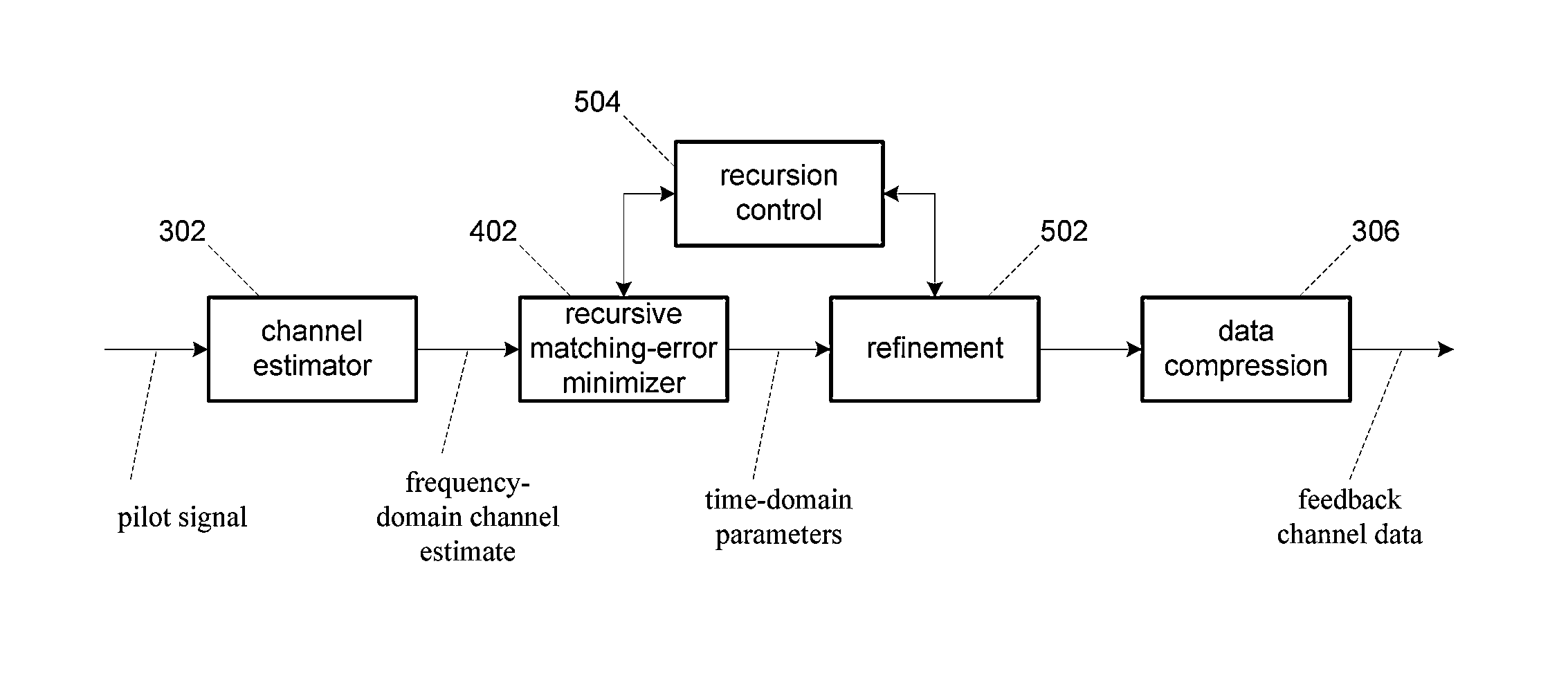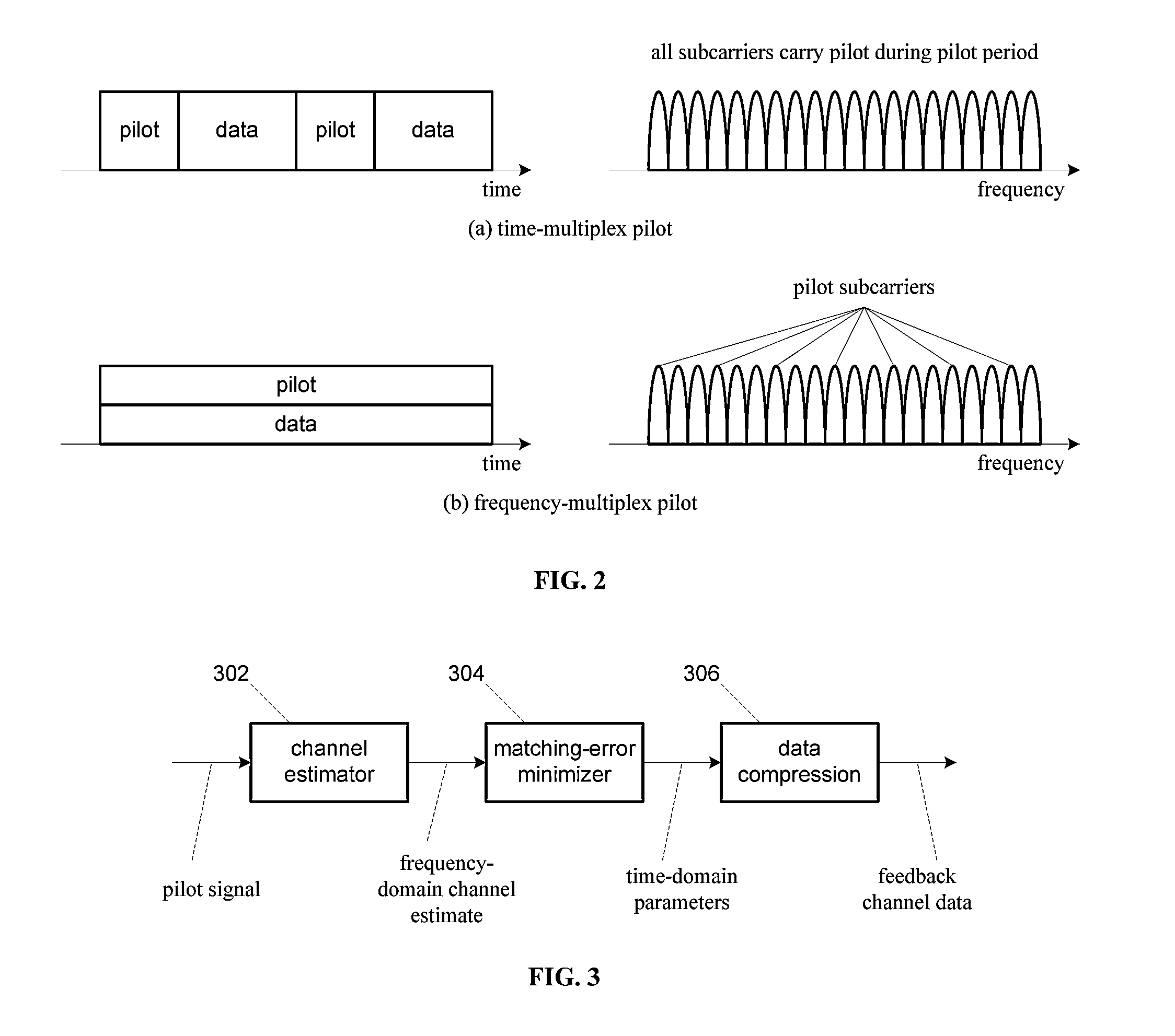Channel feedback in OFDM systems
a channel feedback and channel technology, applied in the field of telecommunication systems and wireless communications systems, can solve the problems of significantly reducing network performance, downlink channel quality can be very poor at the cell edge, uplink channel quality can also be very poor, etc., to reduce feedback overhead, reduce the number of feedback channel taps, and minimize the frequency-domain matching error
- Summary
- Abstract
- Description
- Claims
- Application Information
AI Technical Summary
Benefits of technology
Problems solved by technology
Method used
Image
Examples
Embodiment Construction
[0032]The disclosed subject matter will now be described more fully hereinafter with reference to the accompanying drawings, in which some, but not all aspects or embodiments, are shown with like numerals referring to like elements throughout the description. Various aspects may be embodied in many different forms and should not be construed as limited to the embodiments set forth herein. Specific details are described for the purpose of providing a thorough understanding of the subject innovation. It may be evident, however, that the disclosed subject matter may be practiced without these specific details. In other instances, well-known methods, procedures, and components have not been described in detail so as not to obscure the subject innovation.
[0033]In an orthogonal-frequency division multiple-access (OFDM) system, the pilot is transmitted in designated subcarriers. FIG. 2 illustrates two typical pilot patterns in OFDM systems: time-multiplex pilot and frequency-multiplex pilo...
PUM
 Login to View More
Login to View More Abstract
Description
Claims
Application Information
 Login to View More
Login to View More - R&D
- Intellectual Property
- Life Sciences
- Materials
- Tech Scout
- Unparalleled Data Quality
- Higher Quality Content
- 60% Fewer Hallucinations
Browse by: Latest US Patents, China's latest patents, Technical Efficacy Thesaurus, Application Domain, Technology Topic, Popular Technical Reports.
© 2025 PatSnap. All rights reserved.Legal|Privacy policy|Modern Slavery Act Transparency Statement|Sitemap|About US| Contact US: help@patsnap.com



